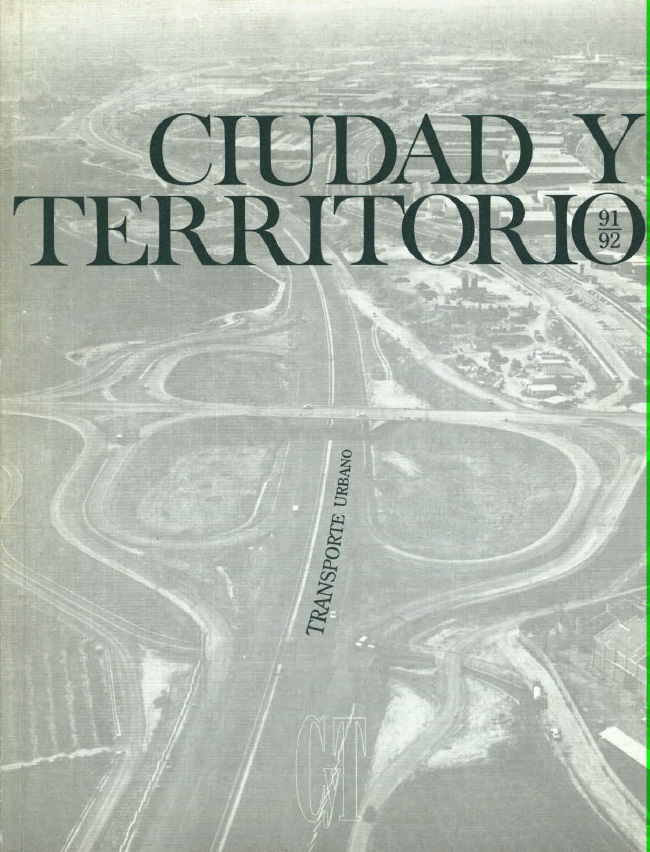¿Tráfico contra callles?: Tipología de calles de Madrid
Resumen
En el análisis y gestión del tráfico urbano de nuestras calles y ciudades se ha producido un reduccionismo metodológico, considerando tan sólo el tráfico de vehículos y el ancho de las calles como variables del diseño de los usos en la sección urbana. Aquí se presenta una propuesta de análisis de las calles en función de su capacidad según los usos, dependiendo esta capacidad, no de la dimensión de la calle, sino de la relación de la calle con el espacio construido que vierte hacia ella; este análisis básico de las calles según su pertenencia a una determinada forma de crecimiento permitirá matizar o avanzar en la creación de politicas de gestión de la calle no por su dimensión, sino por su capacidad de uso, apareciendo tejidos urbanos que para tener el uso básico: el peatonal, deberían restringir el uso del vehículo privado y su aparcamiento. En el análisis de la relación entre la calle y la edificabilidad que vierte hacia ella encontramos casos límite como la calle Barquillo, donde sólo existen 2 m2 de calle por cada 100 m2 construidos que vierten hacia ella.
Descargas
Descargas
Publicado
Cómo citar
Número
Sección
Licencia
Derechos de autor 1992 Agustín Hernández Aja

Esta obra está bajo una licencia internacional Creative Commons Atribución-NoComercial-SinDerivadas 4.0.
Sin perjuicio de lo dispuesto en la legislación vigente sobre Propiedad Intelectual, y conforme a la misma, el/la los/las autor/a/es/as que publiquen en CyTET cede/n a título gratuito, de modo no exclusivo y sin límite temporal al Ministerio de Transportes, Movilidad y Agenda Urbana los derechos para difundir, reproducir, comunicar y distribuir en cualquier formato actual o futuro, en papel o electrónico, la versión original o derivada de su obra bajo licencia de Creative Commons Reconocimiento-NoComercial-SinObraDerivada 4.0 Internacional (CC BY-NC-ND 4.0), así como para incluir o ceder a terceros la inclusión de su contenido en índices, repositorios y bases de datos nacionales e internacionales, con referencia y reconocimiento en todo caso de la autoría del mismo.
Además, al realizar el envío, el/la los/las autor/a/es/as declara/n que se trata de un trabajo original en el que se reconocen las fuentes que han sido utilizadas en su estudio, comprometiéndose a respetar la evidencia científica y a no modificar los datos originales para verificar o refutar una hipótesis de partida; que el contenido esencial del mismo no ha sido publicado previamente ni se publicará en ninguna otra obra o revista mientras esté en proceso de evaluación en la revista CyTET; y que no se ha remitido simultáneamente a otra publicación.
Los autores deben firmar un Formulario de Cesión de Derechos, que les será enviado desde la Secretaría de CyTET una vez se acepte su artículo para ser publicado.
Con el objetivo de favorecer la difusión del conocimiento, CyTET se adhiere al movimiento de revistas de Open Access (OA) y entrega la totalidad de sus contenidos a diversos índices, repositorios y bases de datos nacionales e internacionales bajo este protocolo; por tanto, la remisión de un trabajo para ser publicado en la revista presupone la aceptación explícita por parte del autor/a de este método de distribución.
Se anima a las/os autoras/es a reproducir y alojar sus trabajos publicados en CyTET en repositorios institucionales, páginas web, etc. con la intención de contribuir a la mejora de la transferencia del conocimiento y de la citación de dichos trabajos.








 Enlace a CyTET en Linkedin
Enlace a CyTET en Linkedin